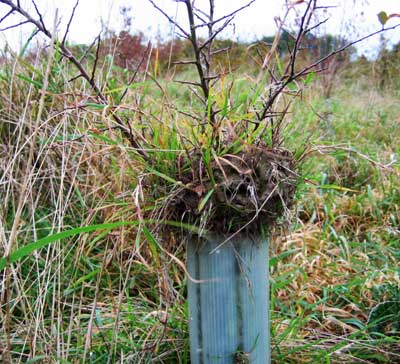High-rise ants pester new trees
- Complaining about the Mainland - 17th August, 2024
- New island designation – is it just greenwash? - 26th April, 2024
- Police and Crime Commissioners – a solution or a problem? - 21st April, 2024
On a recent visit to a farm, The Ranger was enjoying the spectacle of over 200 hectares of new trees planted as a part of the Forestry Commission’s JIGSAW scheme about five years ago. It was a targeted scheme, meaning that it was only certain areas and certain landowners that were eligible. The Isle of Wight was the only part of the South-East that was eligible, and of that, the grant was especially to try to create new woodlands next to existing semi-natural woodlands. Coming along a few years later it was a delight to see the success of this scheme – the landowner was very pleased with it and we were suitably impressed with the establishing trees. On our way through one field we stopped to look at one of the more unusual hazards that trees have to encounter, and another incidental side-effect of tree shelters:

This summer, the ants had started building their nest at the bottom of the tube and worked their way right up to the top. The picture doesn’t show it well but the entire tube was solid with ants-nest, about 50cm high. The doughty blackthorn was still hanging on, but as the foresters in the party were keen to point out, unless the ants are cleared out it probably will get stifled. Still, it seems a shame somehow – a great summer home for the ants, solar heating and shelter from the rain. And even if they do get cleared out, with 200 hectares I suspect a few might escape, and there will be plenty more vacant high-rise homes next spring. Photo credit: Colin Pope

I am having the same problem on a site of clay rich soil and the high rise ant-flats have now set solid around the trees. Advice from our arboriculture department is to remove the shelters.